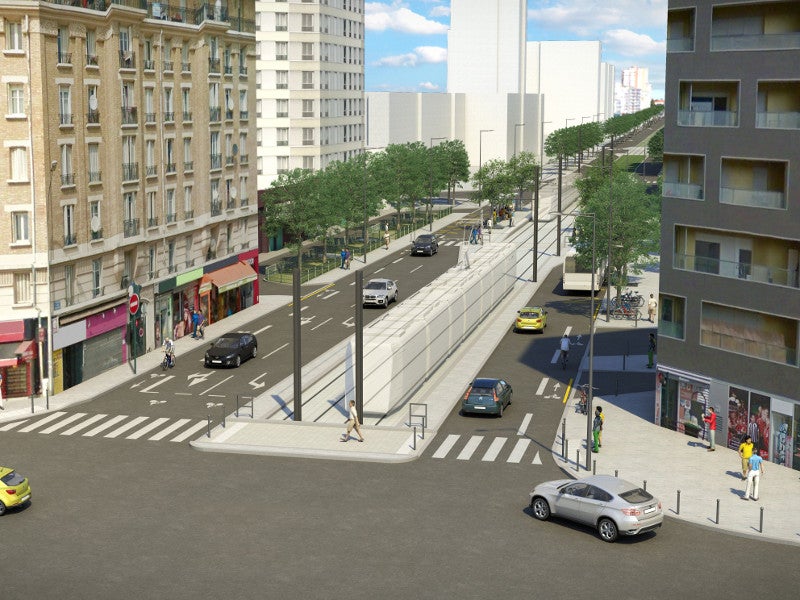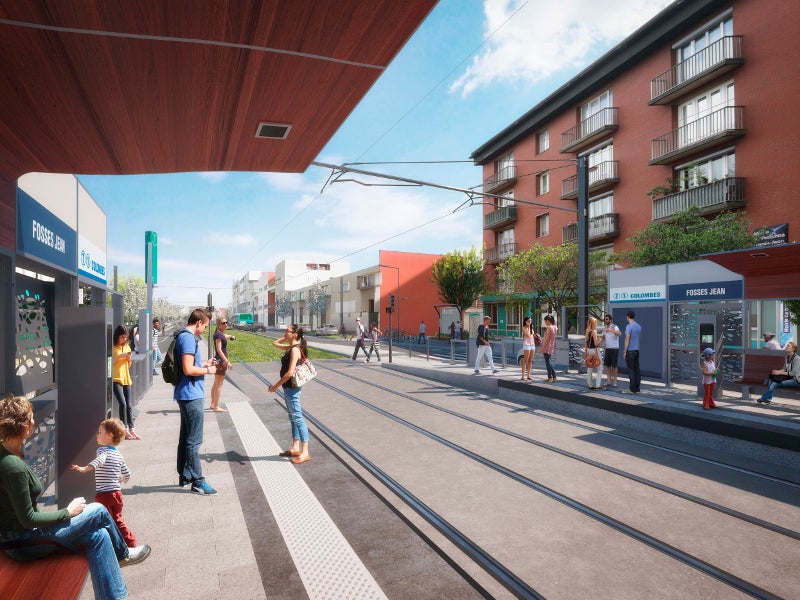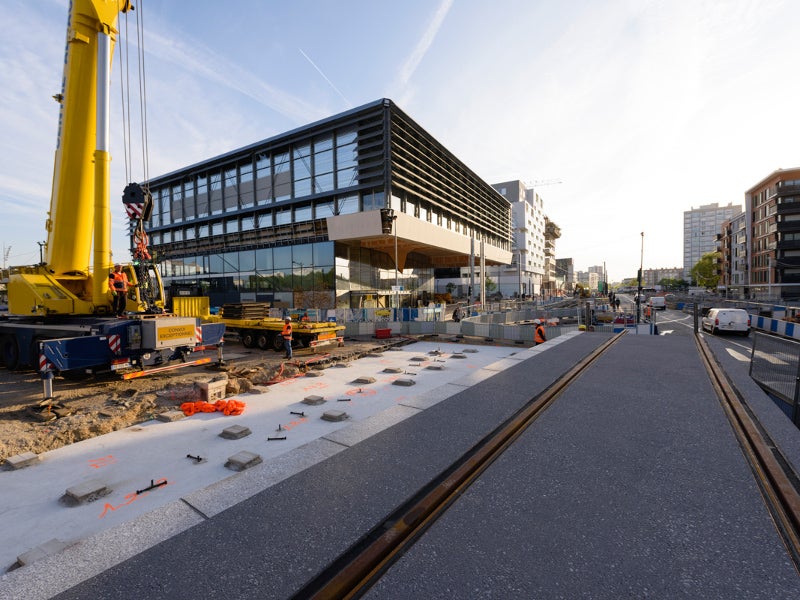The T1 Western Extension project includes the extension of the T1 tramway in Paris, France, to the west to connect to the Transilien suburban Line J and tramline T2.
The 6.4km-long extension will comprise 12 new stations and two redeveloped stations.
The extension is part of the Grand Tram circular line master plan developed for the Greater Paris region. T1 is also being extended eastwards to Val de Fontenay under a separate project.
T1 Western extension is being undertaken in two phases with a total estimated investment of €225m ($300m). The first phase is expected to be completed in the second half of 2019 with an investment of €34.42m ($46m), while phase two is expected to be commissioned by 2024.
T1 Western extension project details
The western extension of T1 tramway is designed to connect the communes of Asnières, Bois-Colombes, and Colombes with the T2 tramway.
T1 tramway will be extended from Asnières-sur-Seine to Colombes towards Nanterre and Rueil-Bad reducing transit time to 22 minutes. It will directly link to metro line 13 at the Courtilles, Transilien J, and T2 at Parc Pierre Lagravère station.
The first phase will extend the length of the tramway by 900m between Les Courtilles and the Quatre-Routes crossroads in Asnières-sur-Seine. Phase two will extend the tramway by 5.5km between the Quatre-Routes junction and the Gabriel Péri station in Colombes.
T1 Western extension project design details
The T1 extension will be built in the centre of the road and will assimilate alongside cars, bicycles, and pedestrians. The layout is designed to provide improved and secure mobility for pedestrians and bicycles by providing refuge areas at crossroads and other areas.
The design also focuses on the creation of a shared section of track for use by both T1 and T2 tramways. The T1 extension will share 500m of track and the La Marine maintenance facility in Colombes with the T2 tram line.
Courtilles station is planned to be transformed into a transit station requiring the redevelopment and lengthening of the platforms from 33m to 110m. The longer platforms can accommodate three trams at any one time.
New stations on the extension will feature Marc Aurel furniture and a granite type coating.
T1 Western extension project construction details
Construction work began with preparatory activities, including the relocation of utilities and urban integration works of the pavement on the southern and northern parts of the road network. Work on the southern part was undertaken between July 2017 and May 2018, followed by the northern part.
Transportation system works, including installation of platforms, track and lining, were carried out on the southern part of the road network in 2018.
Final work on the north side and pedestrian crossings will be completed in the second half of 2019.
Financing for the T1 Western extension
The French State contributed €32m ($42.8) to the project, while the Île-de-France Regional Council and the Hauts-de-Seine General Council provided €75m ($100m) and €45m ($60m) respectively.
Operating costs for the tram line will be financed by Île-de-France Mobilités.
Studies for the project were funded as part of the Region-Département special agreements, while construction work is financed under the 2015-2020 State-Region project agreement.
Contractors involved
RATP was contracted for the construction of transport systems, tramway maintenance, and garage site.
Systra was awarded the contract for managing all transport systems for the line extension, while Explain was contracted for the design of the junctions between Rueil and Nanterre.
T1 Western extension project benefits
The project addresses the daily travel needs of more than 200,000 inhabitants by serving various areas, including markets, hospitals, schools, commercial areas, and cultural locations. It will serve more than 60,000 passengers a day and generate 70,000 jobs.
Phase one will increase the frequency of trams to five minutes, which will further be reduced to four minutes after the completion of phase two.
The extension will improve connectivity services in districts with limited access to public transport while providing real-time passenger information.






